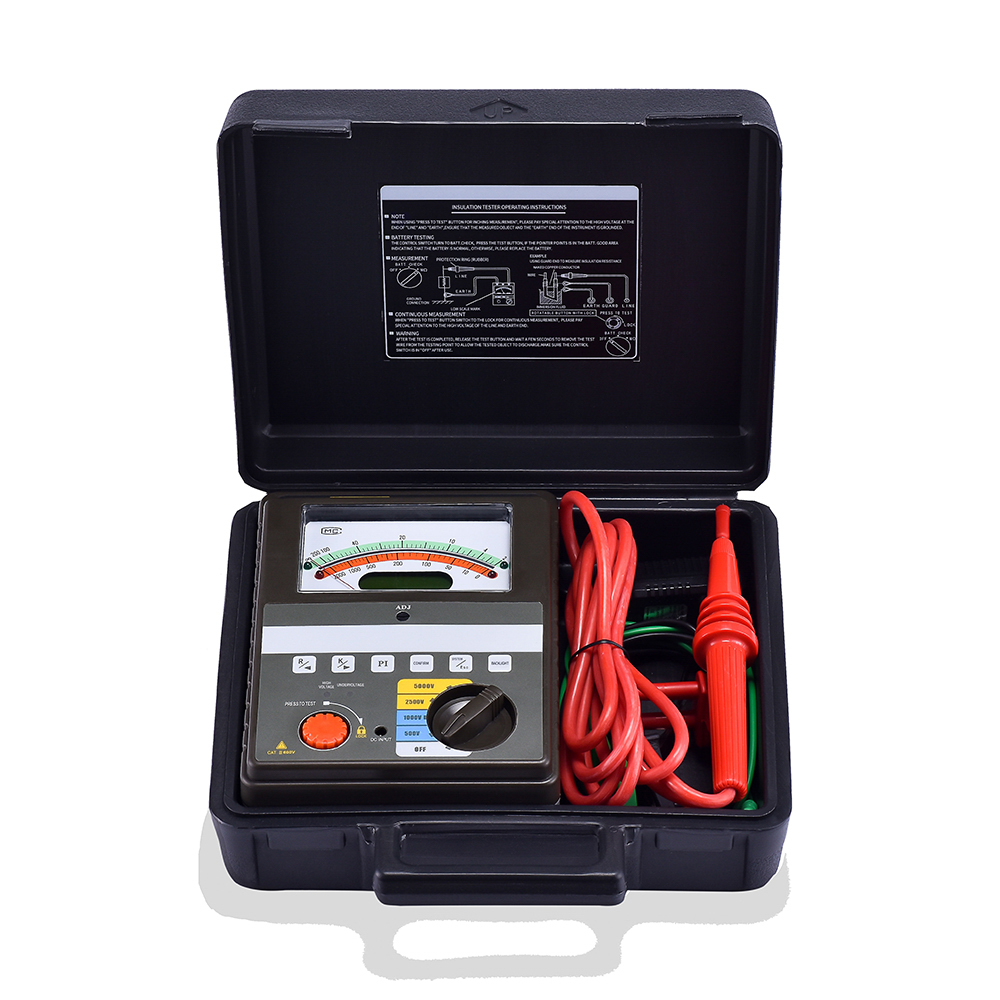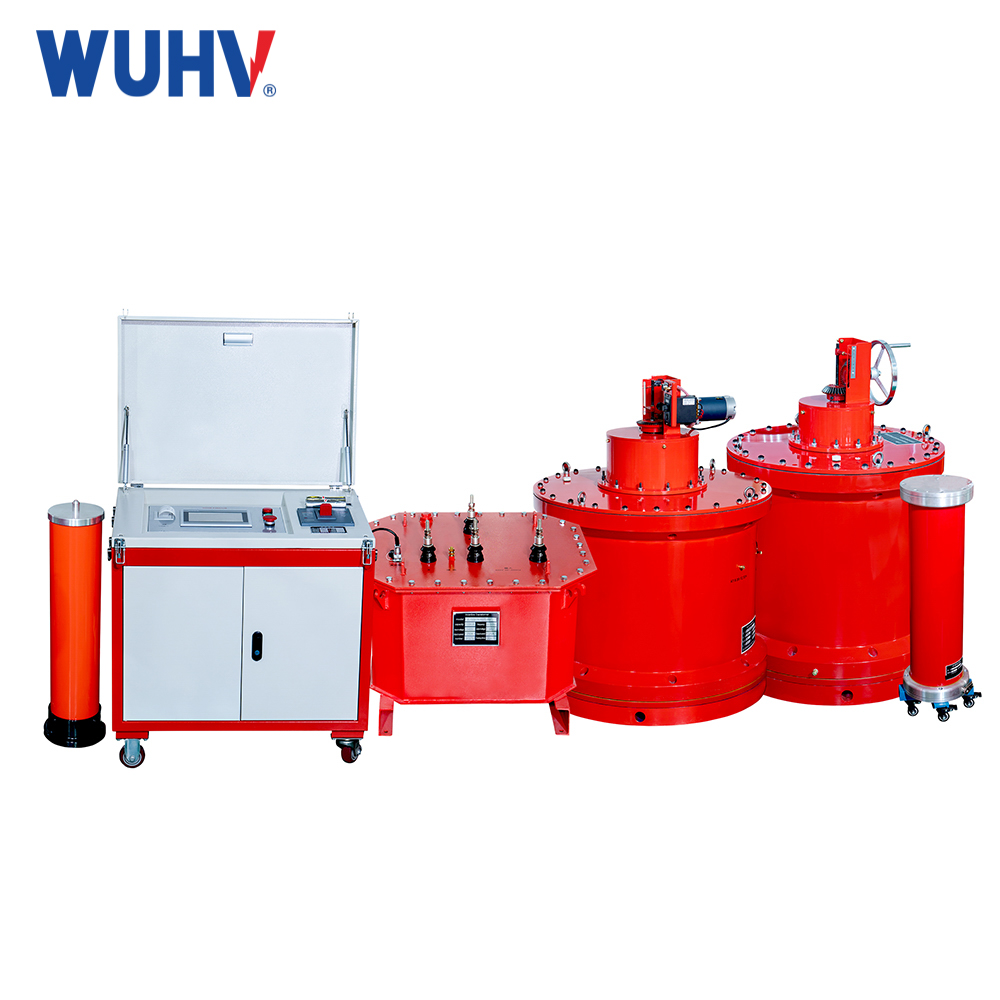The insulation resistance tester under UHV power can help many power workers conduct various power tests more conveniently.

1、 Testing principle:
a) Voltage withstand test:
The basic working principle is to compare the leakage current generated by the tested instrument under the high voltage output of the voltage tester with the preset judgment current. If the detected leakage current is less than the preset value, the instrument passes the test. When the detected leakage current is greater than the judgment current, the test voltage is cut off and an audible and visual alarm is issued to determine the withstand voltage strength of the test piece.
For the grounding test principle of the first test circuit, the voltage tester mainly consists of an AC (DC) high voltage power supply, a timing controller, a detection circuit, an indication circuit, and an alarm circuit. The basic working principle is to compare the leakage current generated by the tested instrument at the high voltage output of the voltage tester with the preset judgment current. If the detected leakage current is less than the preset value, the instrument passes the test. When the detected leakage current is greater than the judgment current, the test voltage is instantly cut off and an audible and visual alarm is issued to determine the withstand strength of the voltage tested component.
b) Insulation impedance:
We know that the voltage for insulation impedance testing is generally 500V or 1000V, which is equivalent to testing a DC withstand voltage test. At this voltage, the instrument measures a current value and then amplifies the current through internal circuit calculations. Finally, it follows Ohm's law: r=u/i, where u is the tested 500V or 1000V and I is the leakage current at that voltage. Based on the experience of withstand voltage testing, we can understand that the current is very small, generally less than 1 μ A.
As can be seen from the above, the principle of insulation impedance testing is completely the same as that of withstand voltage testing, except that it is another expression of Ohm's law. Leakage current is used to describe the insulation performance of the tested object, while insulation impedance is resistance.
2、 Purpose of voltage withstand test:
Voltage withstand test is a non-destructive testing method used to check whether the insulation ability of a product is qualified under transient high voltage. Apply high voltage to the tested equipment for a certain period of time to ensure that the insulation performance of the equipment is strong enough. Another reason for this test is that it can also detect some defects in the instrument, such as insufficient creepage distance and electrical clearance during the manufacturing process.
3、 Voltage withstand test:
There is a general rule that the test voltage is equal to the power supply voltage multiplied by 2+1000V.
For example, if the power supply voltage of the test product is 220V, the test voltage is 220V × 2+1000V=1480V.
The general withstand voltage test time is one minute. Due to the large amount of resistance testing on the production line, the testing time is usually reduced to only a few seconds. There is a typical practical principle. When the testing time is reduced to only 1-2 seconds, the testing voltage must be increased by 10-20% to ensure the reliability of insulation during short-term testing.
4、 Alarm current
The setting of alarm current depends on different products. The best method is to conduct a leakage current test on a batch of samples in advance, take an average value, and then determine a value slightly higher than the average value as the set current. Due to the inevitable leakage current of the tested instrument, it is necessary to ensure that the alarm current is set sufficiently large to avoid being triggered by leakage current errors, and sufficiently small to avoid passing through unqualified samples. In some cases, it is also possible to determine whether the sample is in contact with the output terminal of the voltage tester by setting a so-called low alarm current.
5、 Selection of AC/DC testing
Testing voltage, most safety standards allow the use of AC or DC voltage in withstand voltage testing. If AC test voltage is used, the tested insulator will withstand the maximum pressure when the peak voltage is positive or negative. Therefore, if choosing to use DC voltage testing, it is necessary to ensure that the DC test voltage is twice the AC test voltage, so that the DC voltage is equal to the peak value of the AC voltage. For example, to generate the same electrical stress with an AC voltage of 1500V, the DC voltage must be 1500 × 1.414, which is 2121V DC voltage.
One of the advantages of using DC test voltage is that in DC mode, the current flowing through the voltage tester alarm current measurement device is the actual current flowing through the sample. Another advantage of using DC testing is that the voltage can be gradually applied. When the voltage rises, the operator can detect the current flowing through the sample before breakdown occurs. It should be noted that when using a DC withstand voltage tester, due to the charging of capacitors in the circuit, the sample must be discharged after the test is completed. In fact, no matter how high the voltage and product characteristics are tested, discharging before operating the product is always good.
The disadvantage of DC withstand voltage test is that it can only apply a test voltage in one direction and cannot apply electrical stress in two polarities like AC test. Most electronic products work under AC power supply. In addition, due to the difficulty in generating DC testing voltage, the cost of DC testing is higher than that of AC testing.
The advantage of AC withstand voltage test is that it can detect all voltage polarities, which is closer to the actual situation. In addition, since AC voltage does not charge capacitors, in most cases, stable current values can be obtained by directly outputting the corresponding voltage without gradually increasing the voltage. Moreover, after the AC test is completed, there is no need to discharge the sample.
The drawback of the AC withstand voltage test is that if there is a large capacitance in the tested circuit, in some cases, the AC test may be misjudged. Most safety standards allow users to not connect Y capacitors before testing, or to use DC testing instead. When adding a DC withstand voltage test at the Y capacitor, there will be no misjudgment because the capacitor does not allow any current to pass through at this time.



















